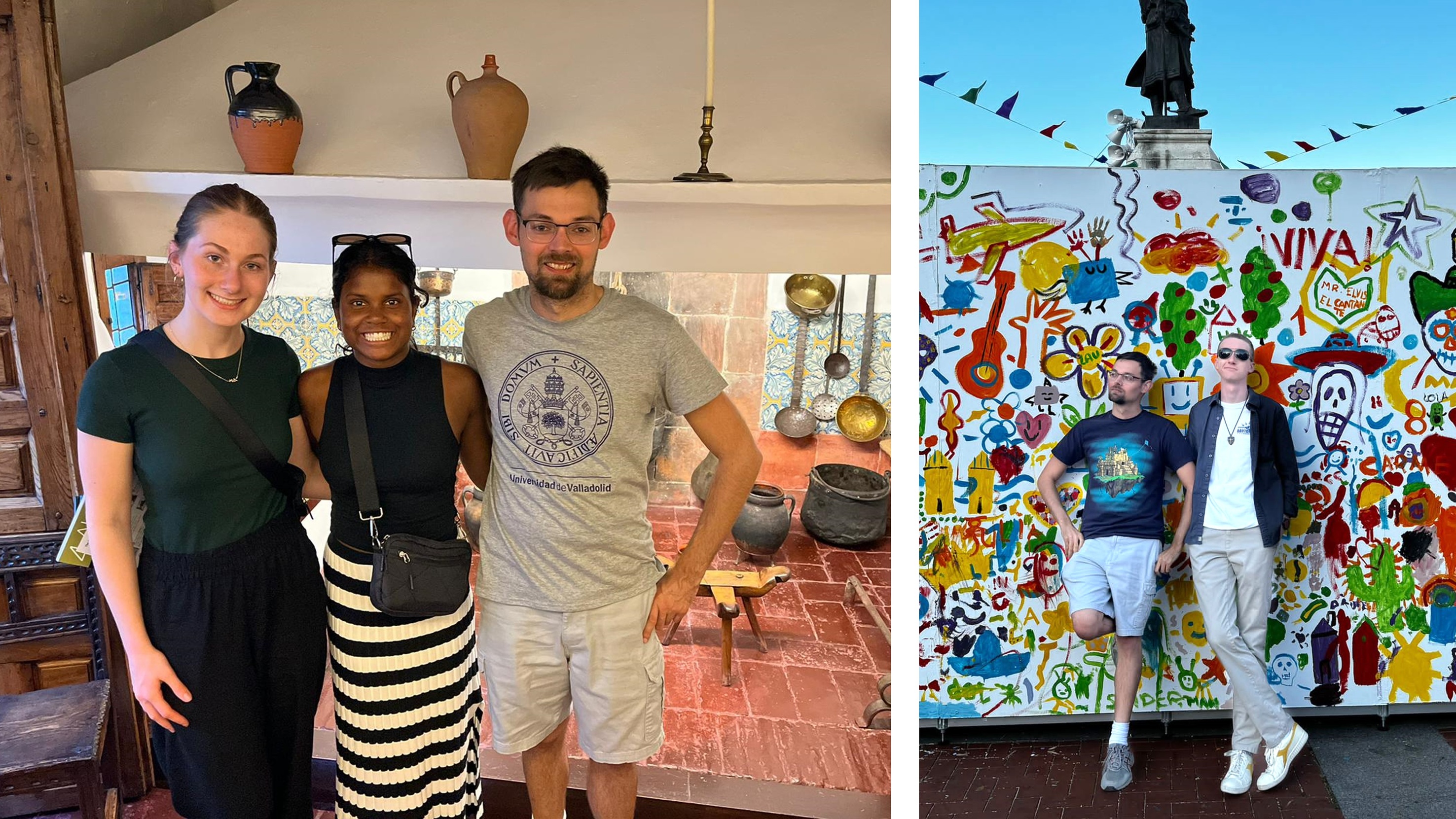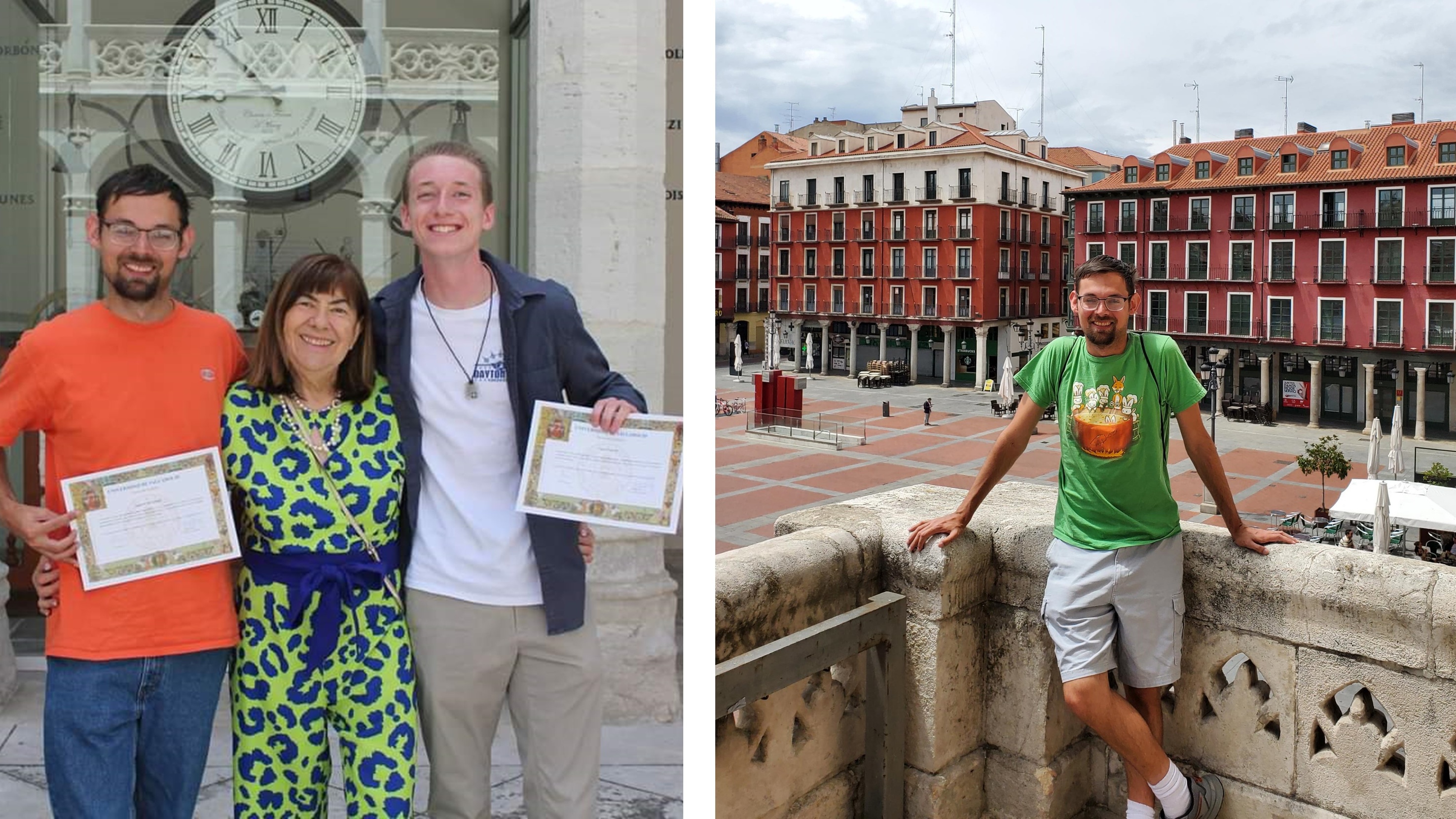by Andrew Kelleher, International Relations and Political Science major
Under the shadow of the church where Christopher Columbus passed away in 1506, I sat with my classmates outside our favorite café and reminisced about soccer, food, and friends. After five weeks of intensive Spanish language and culture study, it was time to say goodbye to the city of Valladolid, Spain. This was the last night with our host families, and a bus would be coming in the morning to take us away.
Months beforehand, I had learned about the Iowa Hispanic Institute, a study abroad program at the University of Valladolid that focused on strengthening a student’s Spanish language abilities and cultural knowledge. The program, which allowed students to earn 7 credit hours toward a Spanish major or minor, offered five weeks of classes followed by one week of independent travel. Spanish was my chosen language at the University of Iowa, so I wanted to pursue this opportunity to further develop my Spanish skills. However, I wasn’t sure how I would pay for the program. Then I discovered the Benjamin A. Gilman International Scholarship.
The Gilman Scholarship, sponsored by the U.S. Department of State, is designed to help fund a study abroad for U.S. citizen undergraduates with financial need. It offers up to $5,000 for credit-bearing programs with lengths from as short as a few weeks to as long as an academic year. On top of the financial benefits, program alumni qualify for 12 months of Non-Competitive Eligibility status with the federal government, which essentially means that they receive fast-tracked, exclusive hiring opportunities within the Federal Civil Service. To add to the Gilman Scholarship itself, the University of Iowa offers the A. Morse Gilman Applicant Scholarship, a $1,000 scholarship that you become eligible for after submission of your Gilman application.

With my Gilman Scholarship in hand, I boarded a plane to Spain. When we arrived in Valladolid, my roommate Sean and I met our host parents, Carmen and Pepe, with whom we would be living during our time in the city. Along with fulfilling their homestay requirements by feeding us, doing our laundry, and speaking exclusively in Spanish, Carmen and Pepe also spent time getting to know us. Many evenings were filled with discussions about similarities across countries, such as their childhood memories of fishing along the coast and my memories of catching catfish along the Mississippi River.
Fourteen students from Iowa participated in the program, but we were not the only ones there. The University of Valladolid welcomed students from around the world, and some of my classmates hailed from far flung places like Scotland, San Diego, and Vietnam. We were in class for four hours every day, learning about culture, language, and literature. Once a week, we returned to campus after the afternoon siesta to meet with local conversation partners to further strengthen our language skills.

Valladolid offered a wealth of activities. It was filled with art and history museums inside historic buildings. Many restaurants specialized in tapas, which are small dishes that are meant to be shared. Campo Grande, the major park in the center of the city, was filled with walking trails, ponds, fountains, and an absolutely mind-boggling number of peacocks.
At the café behind the church in Valladolid, my classmates and I lamented our impending departure. Many tears were shed as we prepared to say goodbye to our friends and host families. I took the long way home, lingering in my favorite parks and delaying the inevitable. When I finally returned my apartment keys to Carmen, she locked eyes with me and said, “Tu casa siempre.”
“Your home, always.”

More information:
The Benjamin A. Gilman International Scholarship, deadlines in October and March
Questions about the Gilman Scholarship can be directed to your study abroad advisor or email Teresa Kout, Assistant Director of Scholarships for Study Abroad.
The Iowa Hispanic Institute runs for six weeks, from roughly Memorial Day Weekend through Independence Day Weekend.
Questions about the Iowa Hispanic Institute can be directed to Emily Brown, Senior Study Abroad Advisor and Program Coordinator.
And of course, you can always reach out to the author, Andrew Kelleher.